
QuietWarmth 36in x 120in Black 120Volt Underfloor Heating Mat in the Underfloor Heating
The key with radiant-based heating of wood flooring is the wood's thermal conductivity; the thinner and denser the wood, the quicker the heat-up time and therefore, the more efficient the system. Using a Warmup Thermostat to control the underfloor heating system facilitates an optimum temperature output that never exceeds 81°F - warm.

Underfloor Heating and Engineered Wood Flooring Blog & Advice Centre Luxury Flooring
Engineered flooring can be used with any type of under-floor heating. However, if you want to install this flooring type over UFH, you must ensure that several conditions are met. Firstly, you will need to get a written confirmation from your underfloor heating supplier that the entire system works properly with controlled temperatures to ensure that the subfloor surface does not exceed 27°C.

Wood Underfloor Heating Mat
The recommended board width of the engineered wood when going over underfloor heating is 150mm. For parquet flooring over underfloor heating, solid wood is not recommended and only engineered timber parquet should be used. Care should always be taken to make sure conditions on site are suitable for both acclimatising and laying any timber floor.

Laminate Flooring Suitable For Electric Underfloor Heating Flooring Ideas
As engineered boards are made up of layers laminated together, they are a more stable product than solid timber. The recommended board width for engineered wood that will be installed over underfloor heating is 150 mm. Solid wood is not recommended for parquet flooring going over underfloor heating. Only engineered wood should be used.

Underfloor Heating For Wood Floors Floor heating systems, Underfloor heating, Hydronic radiant
Underlay For Engineered Wood Flooring. Engineered wood flooring is a revolutionary way of being able to achieve a real wood flooring look in a room which is at risk of suffering significant moisture and temperature fluctuations, as well as in rooms where you have under floor heating. Thanks to the way it's constructed, engineered wood.

Ask The Expert Thermally Upgrading Suspended Floors Ecological Building Systems Floor
Electric underfloor heating is another good option for use with wooden floors. In the case of suspended timber floors, the original floorboards become the subfloor. The electric underfloor heat mats are then laid on top, usually on a base of plywood or a suitable tile backer board. A new floor finish, such as engineered timber, is then added.
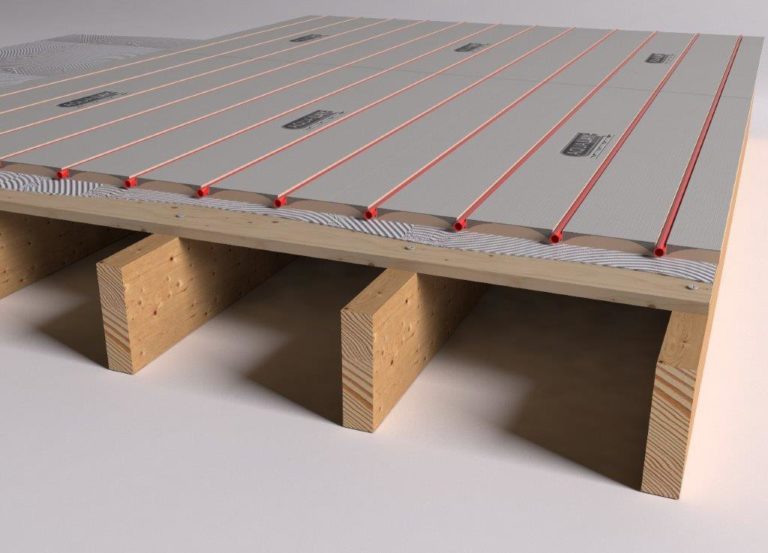
Can you put underfloor heating under wood?
Installing over underfloor heating. Your wood floor must be laid close to the subfloor and without an air gap, as air gaps can cause the wood to dry out very quickly. When laying a floor over underfloor heating loops, the working temperature should be at least 18°C. This is applicable to boards, subfloors and room temperature.

Underfloor heating being installed under our Engineered wood flooring Engineered Wood Floors
Inspect the sub-floor for cracks; these must be repaired before installing the floor. The heating pipes are usually laid beneath a screed 30mm to 75mm deep, this screed must be allowed to dry thoroughly, the moisture content of cementicious sub-floors should be <1.5%MC and <0.3%MC for anhydrite sub-floors. The pipes must evenly cover the whole.
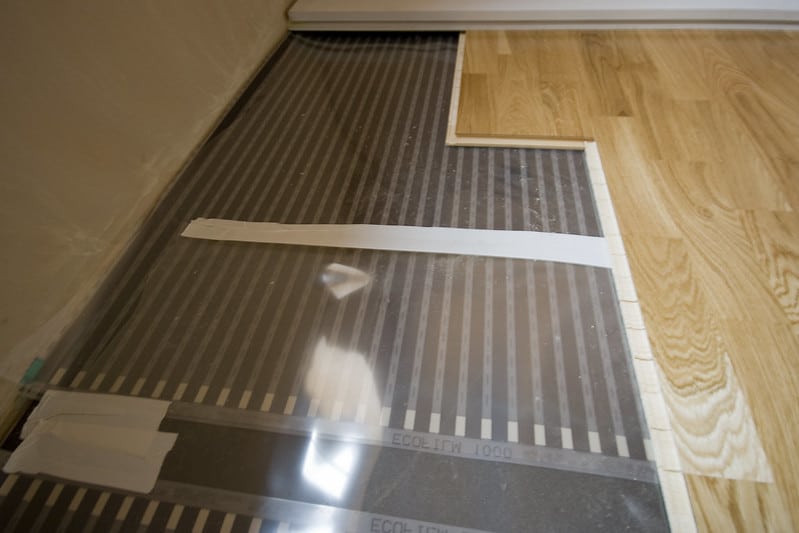
What Wood Flooring is Suitable for Underfloor Heating? All About Materials
Luxury Vinyl Tiles (LVT) LVT flooring is known for its thermal conductivity, making it ideal for use with underfloor heating systems. It also brings the added benefit of being water-resistant, which is excellent for areas such as kitchens or bathrooms. Discover LVT flooring suitable for underfloor heating at Wood and Beyond.
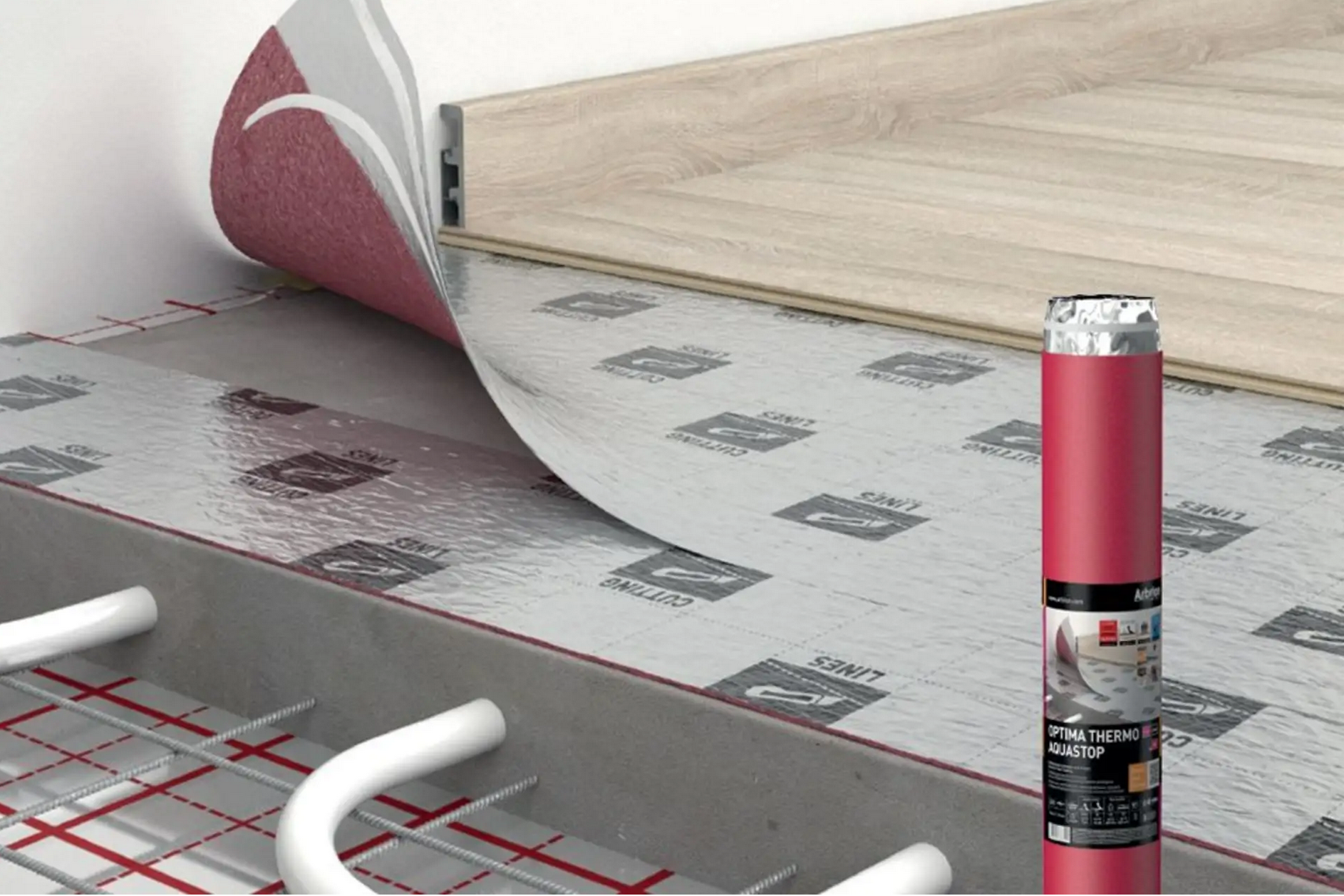
Engineered Wood Flooring And Underfloor Heating Wood and Beyond Blog
Engineered wood works well with underfloor heating because the laminated structure helps the floor to effectively withstand the natural contraction and expansion (caused by moisture in the atmosphere) without impacting the efficiency of the system.. Tips for installing a foil underfloor heating system under wooden floors. Be.

Best Wood Flooring For Underfloor Heating Flooring Tips
Generally, the thinner the flooring, the better it is at conducting heat and the more suitable it is for underfloor heating. Flooring made with engineered timber is the ideal choice as it adjusts well to environmental changes in temperature. When the timber is less dense, the board's thickness becomes important to consider.

Underfloor Heating Mat Laminate Engineered Wood Flooring Lentine Marine
Engineered wood floors are an attractive option for underfloor heating. Sometimes the problem with wood floor heating is that the heat changes the moisture levels, leading to movement or colour.
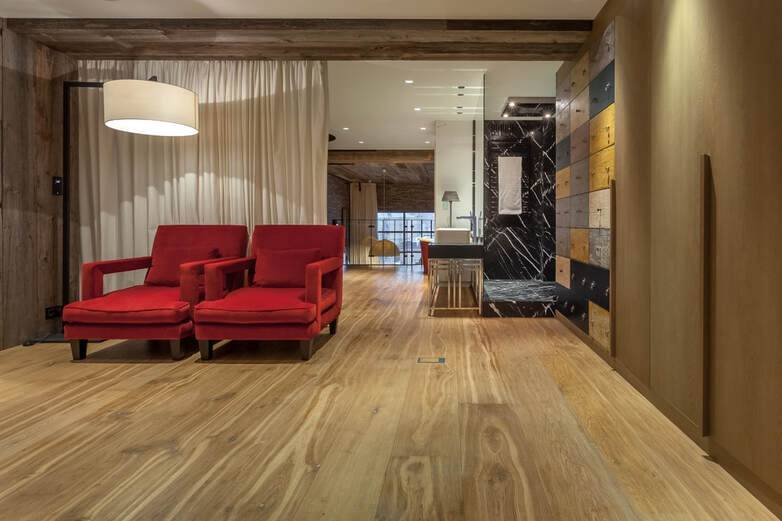
Engineered Wood Flooring over Underfloor Heating
The atmospheric relative humidity should be between 40-60%. After installation, the floor should acclimate for at least 48 hours before turning the system back on. The floor temperature should be limited to 15°C and increased by 1°C a day until the desired floor temperature is achieved.
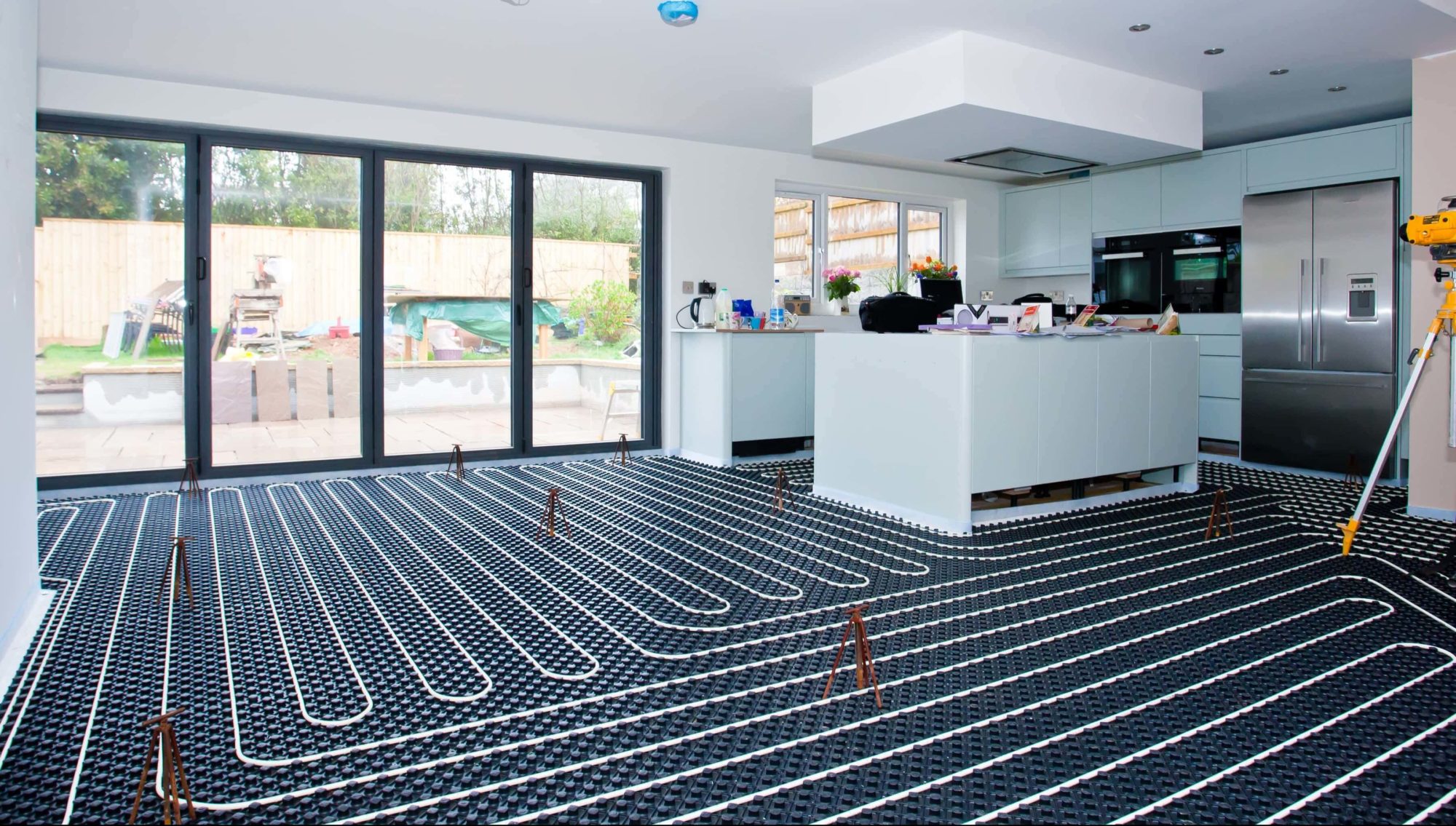
High Heat Output Retrofit Underfloor Heating LoProMax NuHeat
The atmospheric relative humidity should be between 40-60%. After installation, the floor should acclimate for at least 48 hours before turning the system back on. The floor temperature should be limited to 15°C and increased by 1°C a day until the desired floor temperature is achieved.

Herringbone engineered wood flooring over underfloor heating
When an underfloor heating system is commissioned, it means that: The system temperature is gradually increased in daily increments of 5°C until the system reaches 27°C (this usually takes 5-6 days). The system is kept at 27°C for at least 48 hours. The system temperature is then cooled in daily increments of 5°C until it has reached its.

Installing Underfloor Heating with Suspended Timber Floors TheGreenAge Water underfloor
It is typically recommended that a maximum restriction on floor surface temperature of 27°C should not be exceeded for timber flooring. This "ideal temperature" is based on historic research exploring growth and shrinkage rates of timber floors and it was at 27°C that the expansion of timber tested was deemed 'invisible' to the naked eye.
- Philips Zoom Nitewhite 16 Teeth Whitening Gel
- Lough Neagh Discovery Centre Craigavon
- Reduced Engine Performance Volvo V40
- Forest Master 7 Ton Log Splitter
- Miracle Gro Pour And Feed
- Matt Papa Christ Our Hope In Life And Death Lyrics
- 30 Inch Crate For Dog
- How Much Can You Make On Matched Betting
- Mini Wine Bottles By The Case
- Tongue And Groove Ceiling Panels